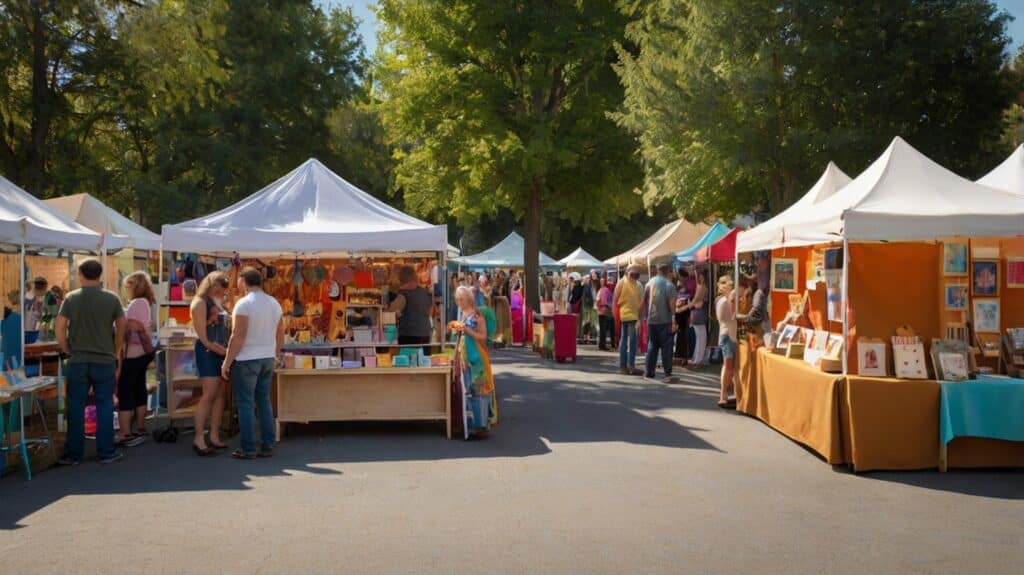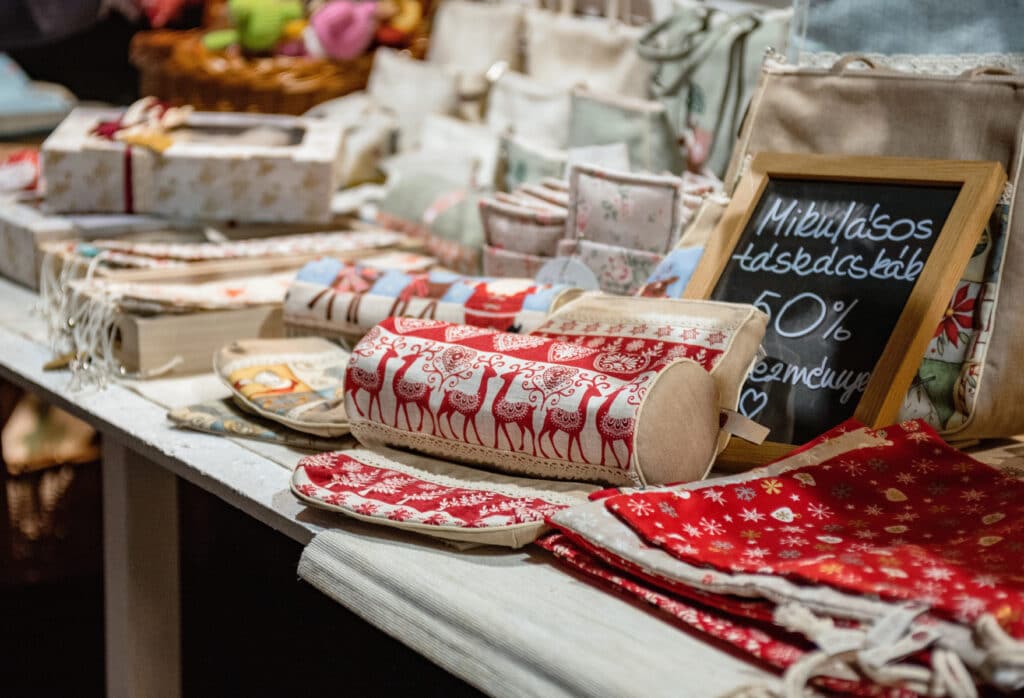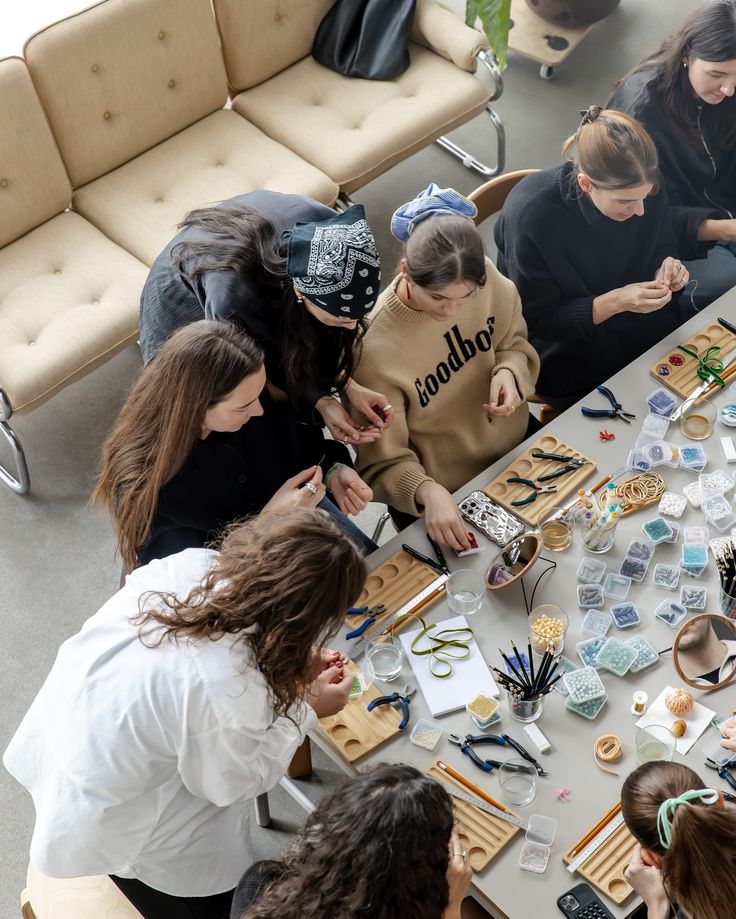
Brisbane’s craft scene thrives on community exchange, creative diversity, and shared learning. For artists looking to move their work from studio to stall, a craft fair offers a live connection to audiences, buyers, and fellow creators. But making the most of the experience requires planning, reflection, and a clear sense of purpose. Presenting art in this context is about engagement: what your work invites, how it speaks, and how it’s remembered.
Preparing for a Craft Fair

Approaching your first craft fair or refining how you exhibit begins with the essentials. Choosing the right stall layout, handling transport logistics, and selecting a focused collection helps shape a stall that’s both functional and expressive. These early steps are what define your craft fair essentials.
Start by narrowing the range of pieces you display. A unified aesthetic, medium, or theme communicates coherence. Visitors tend to remember stalls that feel intentional. Label your work clearly, price it visibly, and display payment options that make it easy to transact.
Prepare an extra stock of popular or small-ticket items for spontaneous purchases. The practical aspects (change floats, packaging materials, and displays) are part of your toolkit. Just as importantly, have a brief introduction prepared about your process. You’ll be asked. Often.
Knowing Your Audience

Every craft fair draws a different audience profile. In Brisbane, it’s common to find both seasoned collectors and casual browsers, plus families who attend for creative inspirations. Understanding what brings these visitors shapes how you communicate. A visitor focused on sourcing gifts may approach your stall with different priorities than one seeking original works for their home or collection.
Asking short questions or commenting on particular reactions can start conversations without pressure. People often remember how they felt interacting with an artist, not just the item they bought. Consider this when choosing stall assistants, too; those brief exchanges represent your practice just as your work does.
Creating a Stall That Works

The most effective displays act like invitations. Think of the stall as a temporary gallery where each surface and prop has a task. Height variations in your layout help guide the eye. Lighting, whether natural or added, makes texture and colour more visible, especially for items like ceramics or textiles.
Many exhibitors use venue maps ahead of the show to select positions with good footfall, but even a quiet corner can attract if the setup draws curiosity. Adding a sample of your process, like a sketchbook or toolkit, often invites questions. Be mindful of security checks and plan for weather, especially for outdoor events. If your stall’s appearance feels cared for, visitors respond in kind.
Selling Without Selling
Hard-selling rarely aligns with the tone of creative events. Visitors at a craft market respond more to authenticity and story. Consider what narratives sit behind each piece. Is the material repurposed? Is the process time-intensive? Sharing these details in measured ways can make a difference to how work is perceived.
Printed cards or tags that explain your method or reference series titles create memory hooks. If pricing is modest, buyers may still hesitate; often it’s about decision fatigue rather than price. Offering ‘buy now, collect later’ options or packaging small works as sets can help. Ask buyers if they’d like to join your mailing list, or photograph their purchase for your social archive. Each sale can extend beyond the stall.

Participating in the Broader Event
A fair like Brisbane’s invites more than transactions. It’s also a site for exchange, learning, and visibility. Artists who attend interactive classes or sit in on learning sessions often report unexpected connections with craft experts, other stallholders, or business visitors.
These interactions can seed collaborations or spark directions you hadn’t previously considered. Taking part in a quilt show, entering a work into a showcase, or joining guest artists’ talks gives added exposure. Some fairs also include craft events or trade show elements where materials and tools are introduced. Even a quiet conversation at the event cafe can lead to a future invitation.
Working With the Fair Organisers

Organisers want their artists to succeed. Using the help desk as a resource in advance can clarify rules on banners, stall dimensions, or event timings. During the show, staff can assist with audience flow and address concerns quickly. Checking in early also helps you plan around accessible parking spaces, deliveries, or setup time.
If the event permits pre-show online booking, it can help signal demand and attract a more engaged audience. Meanwhile, offering samples or short demos often appeals to families, supporting the family-friendly character that defines many Brisbane shows.
Looking After Yourself

Being present and alert through a full day of talking, selling, and standing requires energy management. Bring snacks, stay hydrated, and take short breaks when possible. If a friend or assistant joins you, rotate shifts to keep interactions fresh.
Knowing your own rhythm helps. Some artists do better with short conversations; others enjoy extended dialogue. You don’t need to over-explain or fill every silence. Let your work speak, too. Preparing mentally for slow patches or busy rushes helps reduce frustration and keep responses consistent.
After the Fair

Take time to review what worked and what didn’t. Which pieces sold first? What comments did you hear repeatedly? Was your pricing appropriate for the craft industry in your segment?
Sort and repack leftover craft materials efficiently. Document sales and conversations while the details are still clear. If your work was part of a display of exquisite collections, note how placement affected attention. If any contacts expressed future interest, send a short message while the memory is fresh.
Conclusion
Brisbane’s craft fairs offer a living space where art meets audience, maker meets buyer, and skill meets curiosity. Selling here is about choosing how your practice participates in a shared moment. A fair provides an opportunity to present your work and consider the reasons behind your creative choices. And what happens when you place it in front of someone new
- 1share
- Facebook0
- Pinterest1
- Twitter0
- Reddit0













